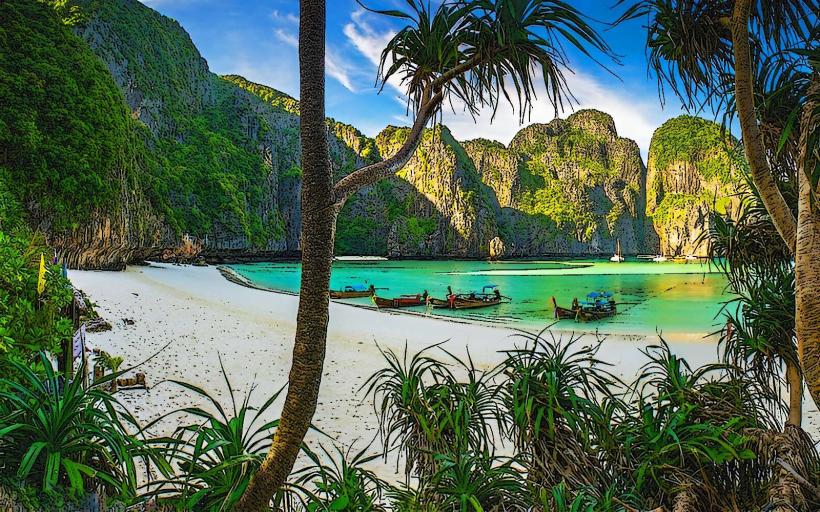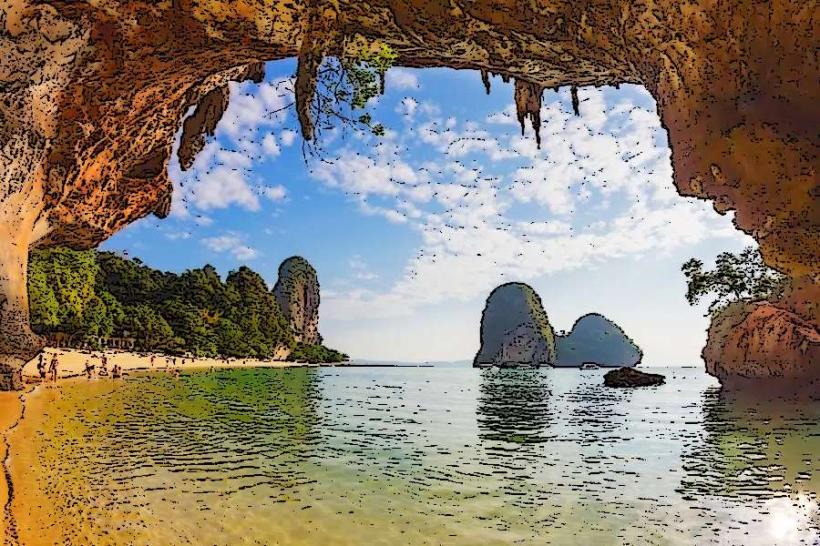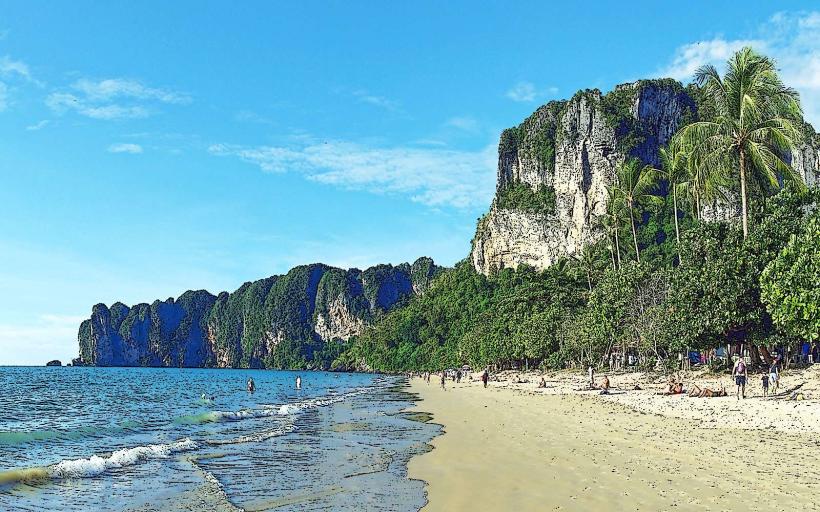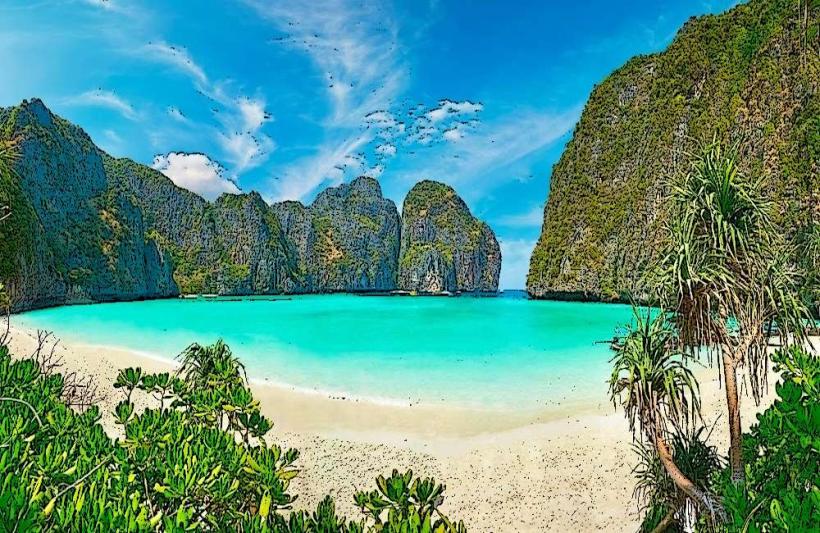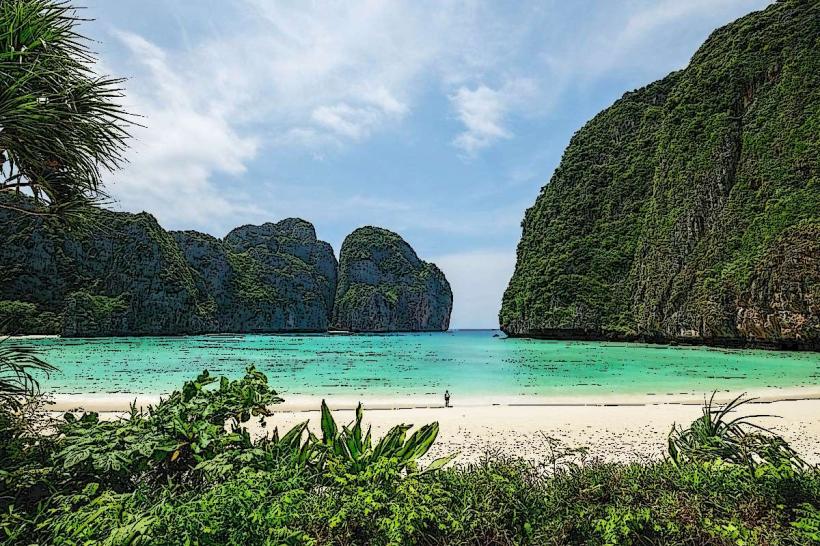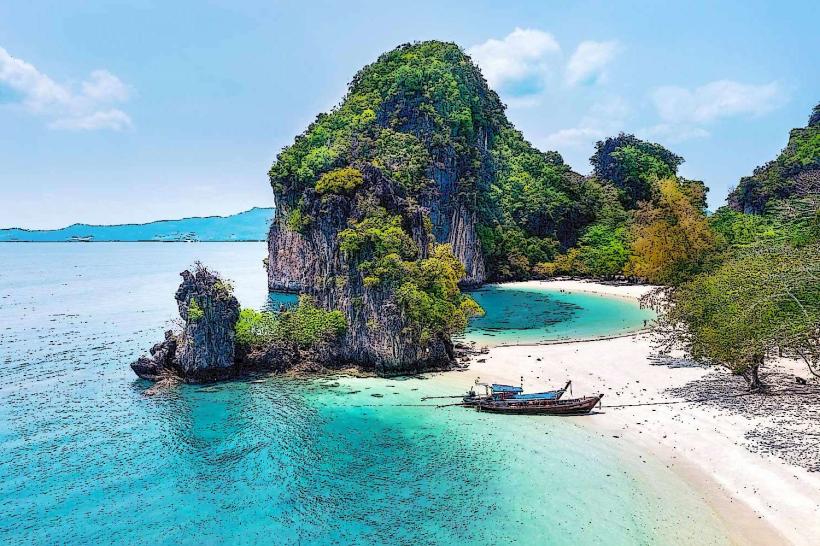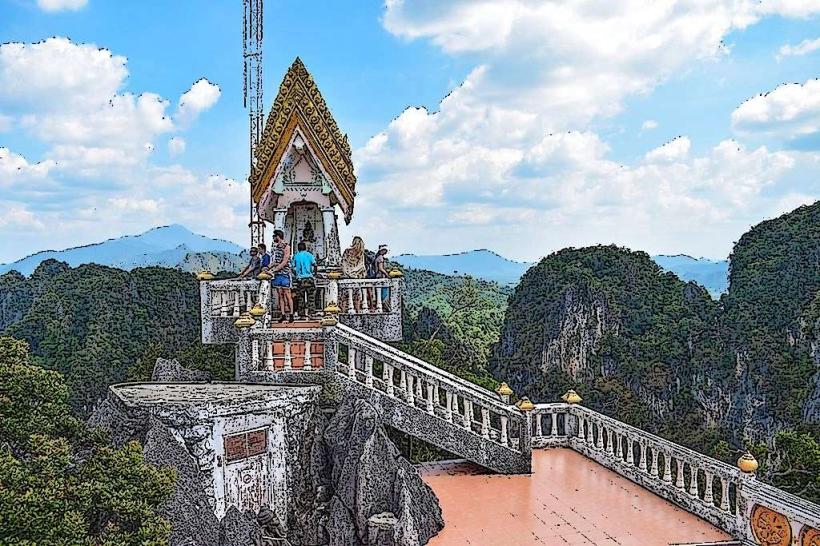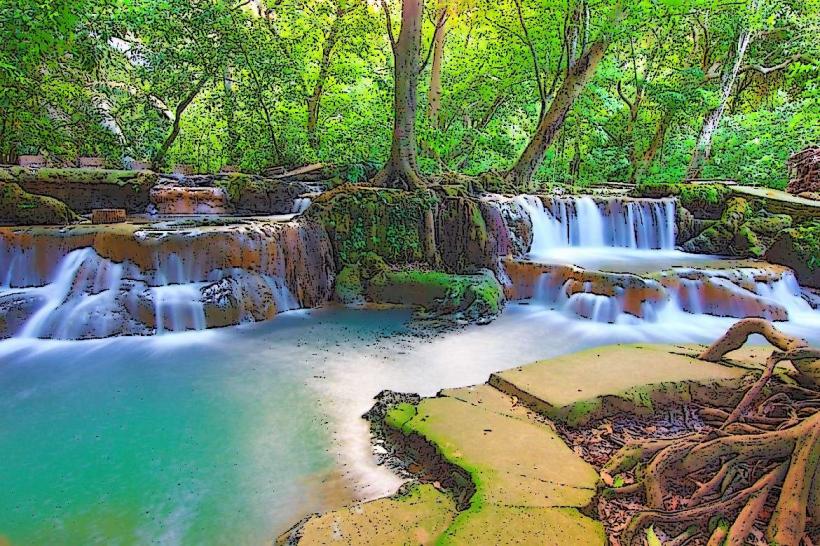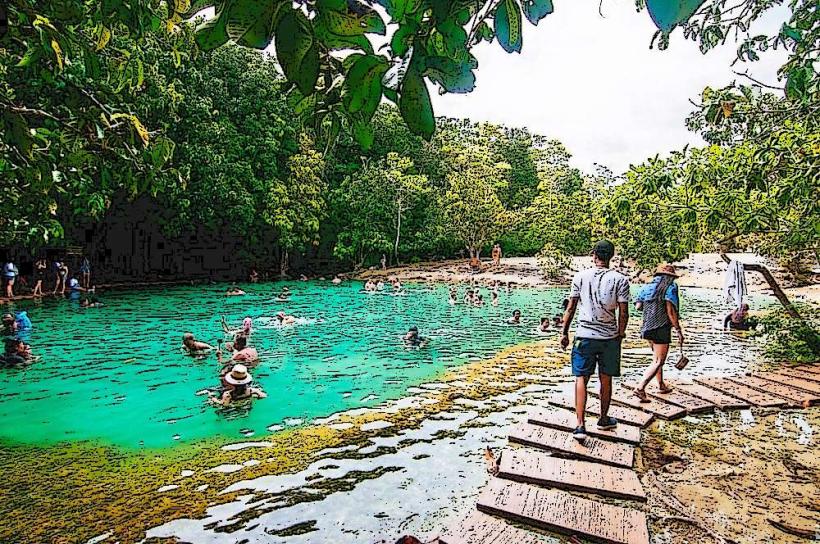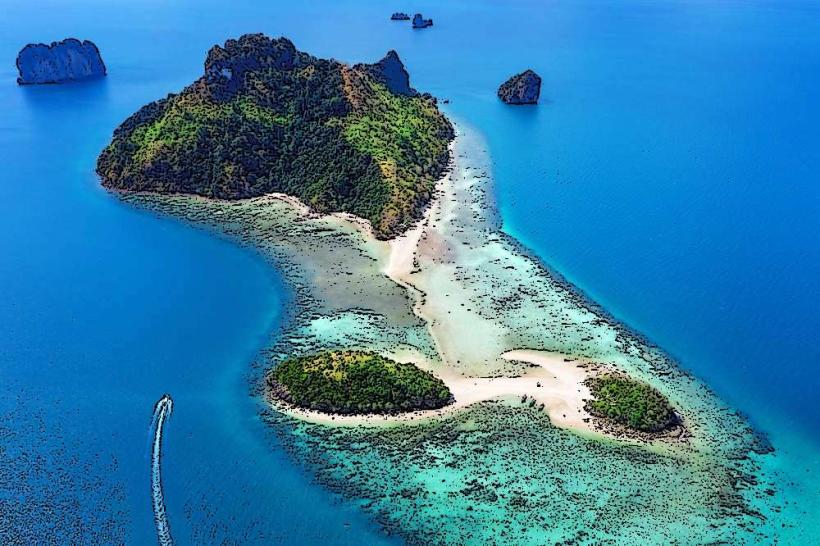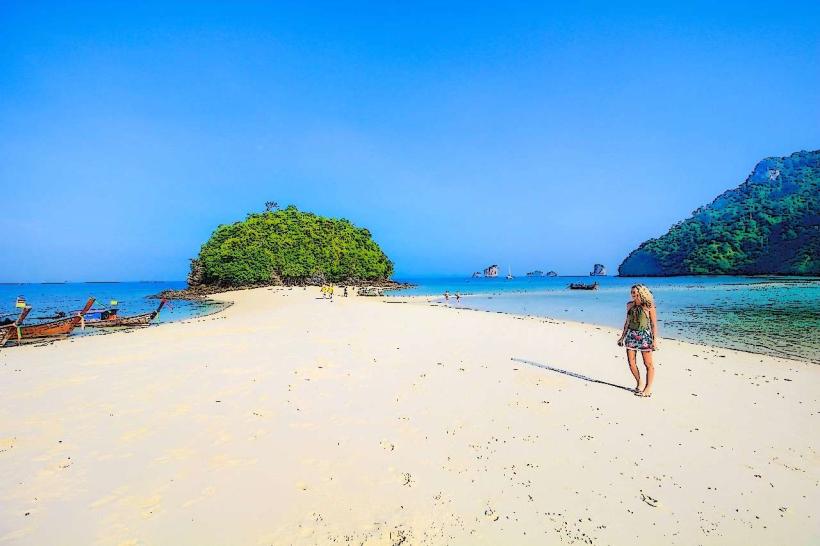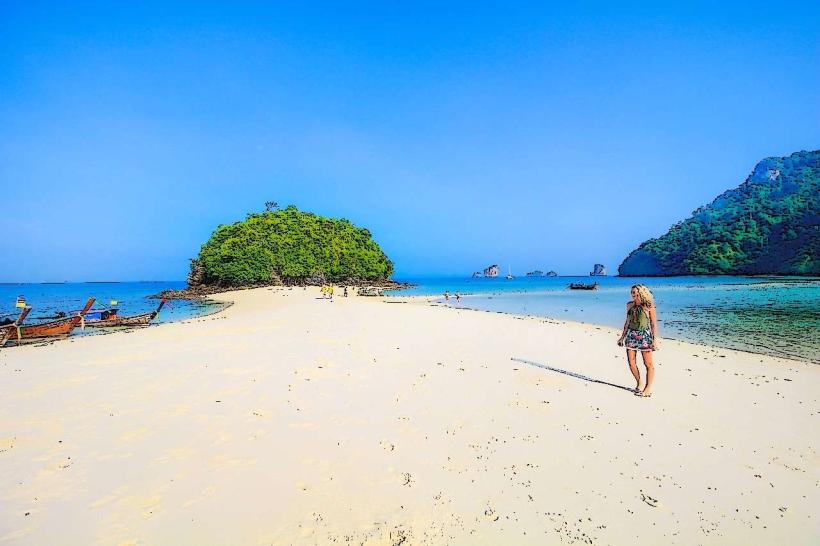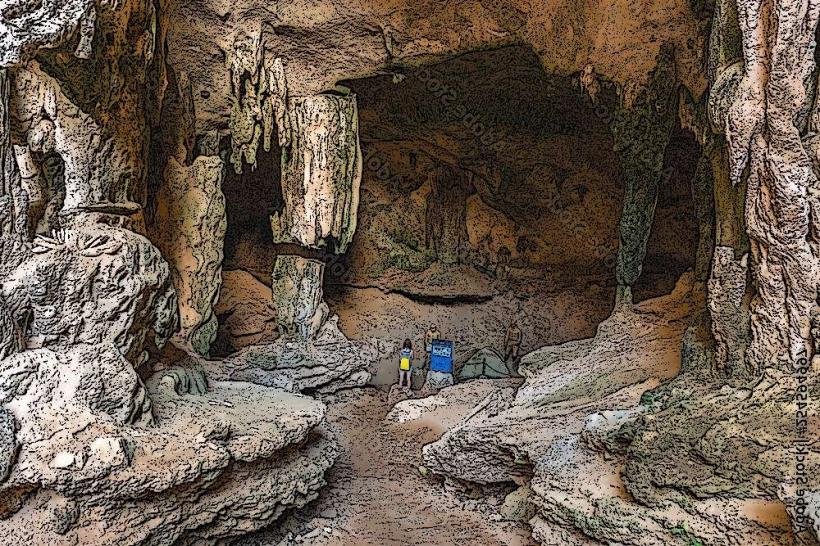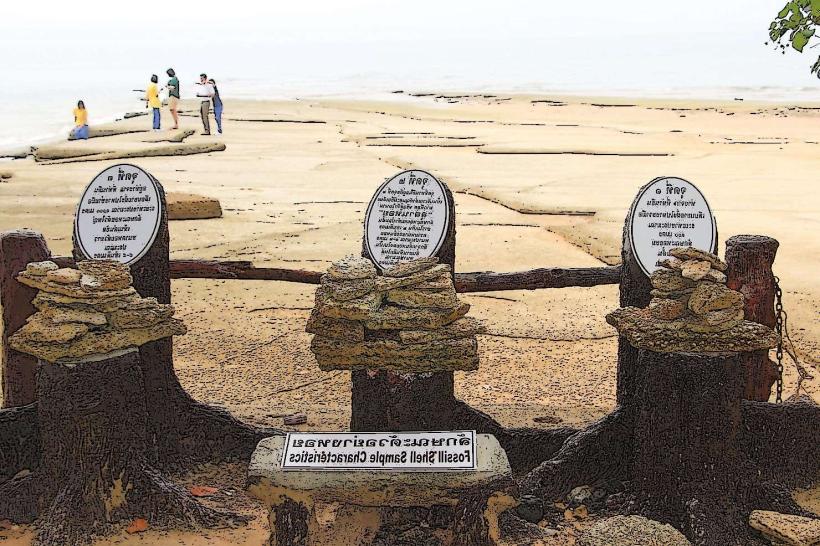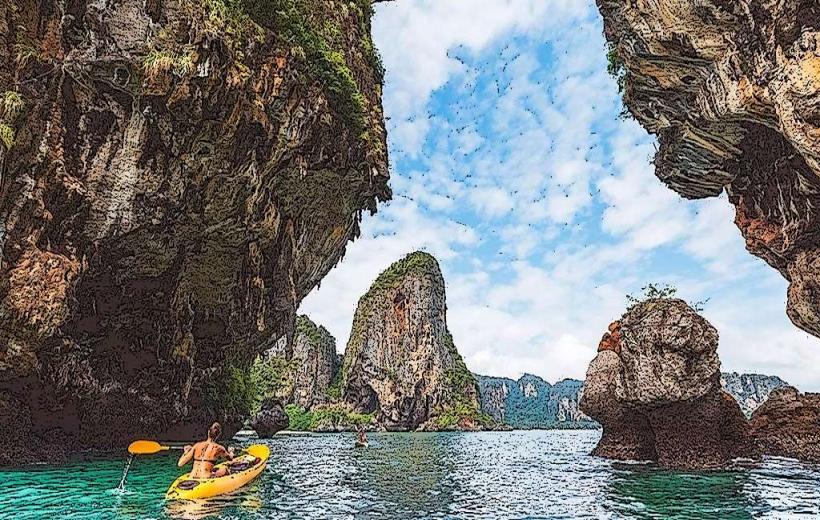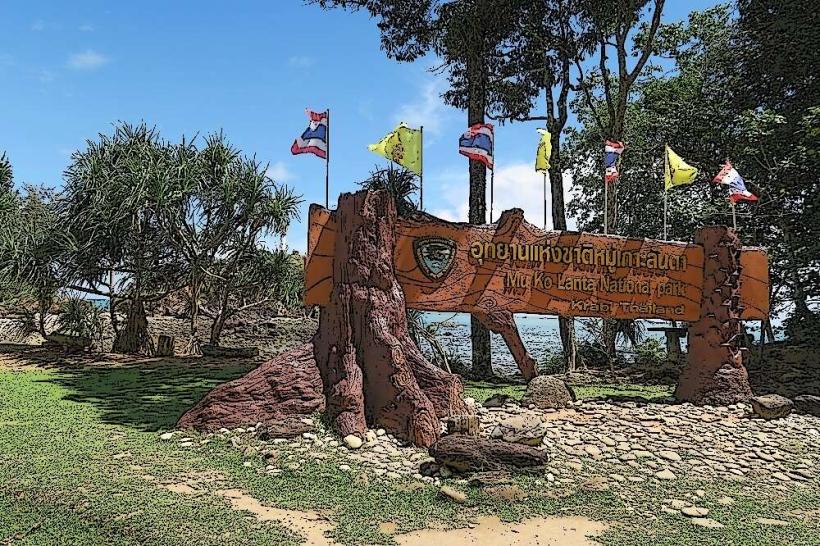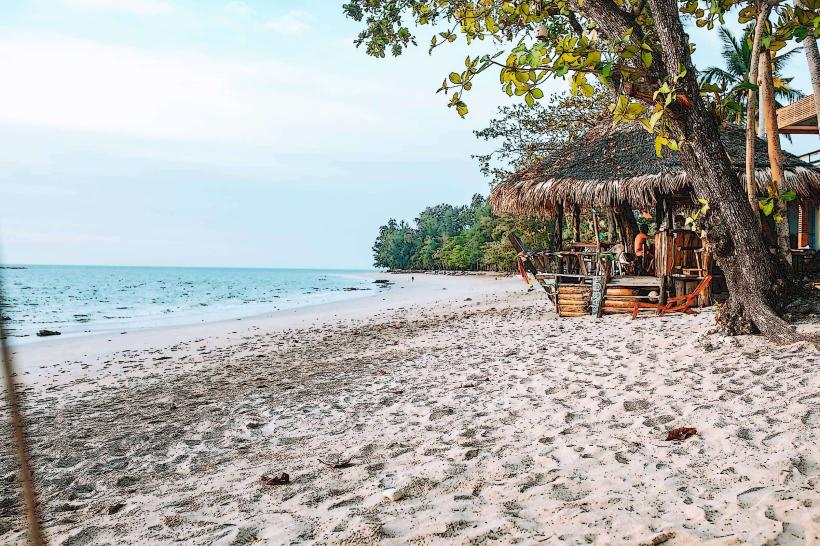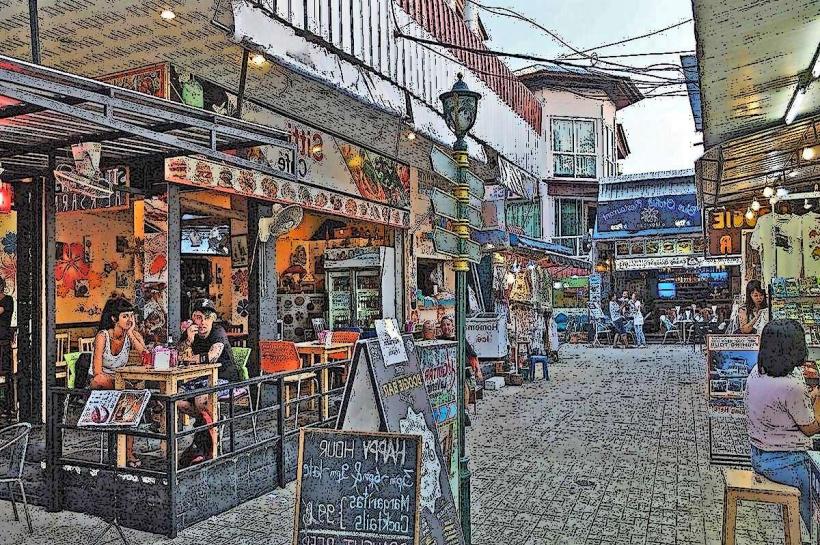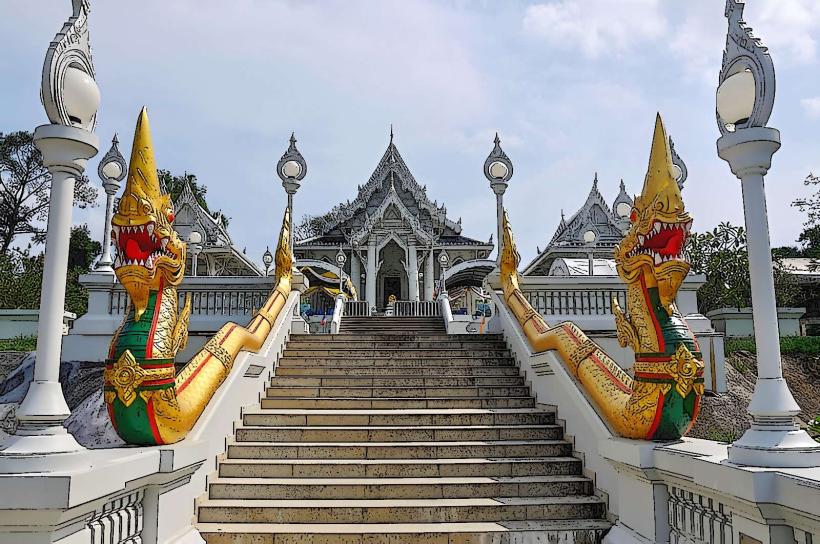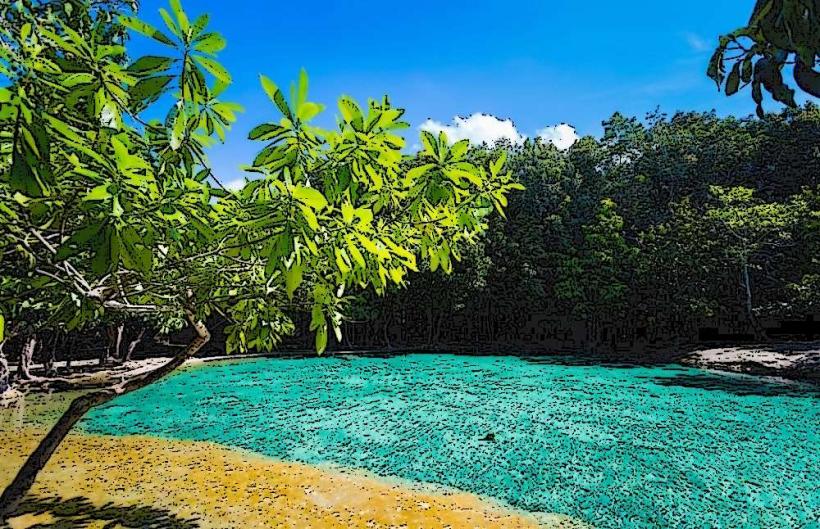Information
City: KrabiCountry: Thailand
Continent: Asia
Krabi, Thailand, Asia
Overview
Krabi, in southern Thailand, is both a province and a lively coastal city, famous for towering limestone cliffs, soft white beaches, turquoise waters, and a culture that hums with energy, in turn krabi sits on the edge of the Andaman Sea, drawing travelers who come for jungle treks, lazy afternoons on quiet beaches, and a taste of traditional Thai life.The province is home to several famous islands-Koh Phi Phi’s turquoise coves, Railay Beach’s towering cliffs, and Koh Lanta’s quiet shores-making it one of Thailand’s top tourist hubs, then krabi sits in southern Thailand, about 780 kilometers-roughly a day’s drive-south of Bangkok.The Andaman Sea lies to its west, while rugged mountains, lush rainforests, and wide open plains wrap around it, to boot krabi’s tropical monsoon climate brings three distinct seasons.From March to May, the sizzling season sets in, with humid air clinging to your skin and temperatures soaring past 35°C (95°F), also it’s usually dry, though the heat can hit hard, like the sun pressing against your skin, slightly Rainy season runs from June to October, bringing steady downpours, the crack of sudden storms, and air so thick with humidity it clings to your skin, after that it’s the off-season for tourists because of the weather, yet the hills glow green after the rain, which usually sweeps through in quick bursts.Cool Season, from November to February, is the perfect time to visit Krabi, when the air stays dry and comfortably cool, with sunny days hovering between 24°C and 32°C (75°F to 90°F), therefore it’s perfect for a sunny day at the beach or wandering through a bustling city square.Krabi’s story stretches back to ancient times, and its name likely comes from the Krabi River, the wide brown ribbon that winds through the region, moreover people have lived in this region for thousands of years, leaving behind prehistoric cave paintings and stone tools tucked deep inside the cool limestone chambers of Tham Sua (Tiger Cave) and scattered across other parts of Krabi province.Siamese Influence: Much like the rest of southern Thailand, Krabi came under the sway of Siamese rulers in the early days of the Kingdom of Siam, when royal envoys arrived by boat along its quiet, jade-green shores, simultaneously over time, the region grew into a bustling hub of trade and local politics, shaped by the reach of powerful kingdoms and sprawling empires.Over the last few decades, Krabi has blossomed into a lively tourist hub, yet you can still wander past quiet limestone cliffs and feel its natural charm untouched, not only that with its sweeping views and quick ferry rides to nearby islands, the area has grown into a favorite destination for both local visitors and travelers from abroad, for the most part In Krabi, a coastal province known locally as a “changwat,” the Krabi Provincial Administration runs the day‑to‑day affairs, moreover the local government runs Krabi’s affairs, from the busy streets and markets in the city to the quiet districts and sunlit islands nearby.Krabi’s provincial government teams up with national authorities to boost tourism, keep roads and ports running smoothly, and protect the area’s white-sand beaches and clear waters, and krabi’s economy leans heavily on tourism, with visitors filling its beaches year-round, but farming, fishing, and real estate also play pivotal roles.As it happens, Tourism: Krabi ranks among Thailand’s top navigate spots, drawing millions each year to its white-sand beaches and turquoise waters, what’s more tourists flock here for the soft-sand beaches, the towering limestone cliffs, the scattered emerald islands, and the rush of adventure activities.Somehow, Tourism now drives more of the province’s economy than anything else, filling hotels, cafés, and tour buses from coast to coast, on top of that fishing and farming keep the province’s economy alive, from modest boats unloading silver-scaled mackerel at dawn to fields of rice swaying in the afternoon breeze.Around the provincial capital, farmers tend coconut palms, tap rubber trees, and grow fruit, while along Krabi’s coast, the docks bustle with fresh seafood, at the same time real Estate: The tourism surge has fueled a wave of real estate projects-hotels with rooftop pools, beachside resorts, and recent homes-especially on islands like Koh Phi Phi and in spots such as Ao Nang.Foreign investment in Krabi’s real estate is climbing, fueled by expatriates and travelers snapping up plots to build sunlit vacation homes near the shore, as well as in Krabi, southern Thai, Malay, and Chinese influences mingle, shaped by Buddhism, seaside customs, and lively local festivals where lanterns glow against the night sky.You know, In Krabi, people mainly speak Thai, but you’ll often hear the softer tones of southern dialects drifting through tiny village markets, after that you’ll hear plenty of English in busy tourist spots, but in a quiet mountain village it’s much harder to find.In Krabi, Buddhism is the main religion, and you’ll find several fundamental temples here, like Wat Tham Sua, where long stone steps lead up to a hilltop view, as a result a large number of Muslims also live here, especially in fishing towns along the coast and in quiet rural villages.Festivals: In Krabi, you’ll find lively celebrations for Songkran, Loy Krathong, and Chinese fresh Year, with streets bursting into parades, fireworks lighting the night, and dancers moving to the beat of traditional drums, likewise the Krabi River Festival draws crowds each year, bringing the province’s river and waterway traditions to life with music, boats, and the smell of grilled seafood drifting through the air.Frankly, In Krabi, seafood takes center stage alongside bold southern Thai flavors, with dishes like Tom Yam Goong’s fiery shrimp broth, the rich Gaeng Tai Pla fish curry, tangy Khao Yam rice salad, and the ever-popular Pad Thai, besides you’ll also find local favorites like fresh crab and rich, coconut-based dishes.Over the years, Krabi’s transport and infrastructure have expanded and improved to keep pace with the steady stream of tourists, from smoother roads winding along the coast to upgraded ferry terminals buzzing with arrivals, equally important krabi’s easy to reach by road, with National Highway 4 running past palm-lined stretches and connecting the town to Phuket and all the way up to Bangkok.Funny enough, Most of the roads are in good shape, and you can reach popular spots like Ao Nang, Railay Beach, or the Phi Phi Islands without a hassle-just follow the smooth asphalt past palm trees and sea views, and krabi International Airport (KBV) handles both domestic and international flights, linking the seaside town to Bangkok, Chiang Mai, and a range of overseas destinations.The airport’s expanded over the years to handle the surge of travelers, especially when peak tourist season hits and the terminals buzz with rolling suitcases, likewise public transport in Krabi is fairly limited, so most people get around in songthaews-those open-air shared taxis-along with minivans, tuk-tuks, or the occasional motorbike taxi weaving through traffic, under certain circumstances Visitors usually get around by hailing private taxis, zipping through side streets on rented scooters, or joining guided tours, alternatively boats and ferries are the lifeline here-Krabi’s coastal spot and scattering of islands make speedboats and ferries the go-to for reaching Koh Phi Phi, Koh Lanta, Railay Beach, or even Phuket, with salt spray on your face as you glide over the water.People take these boats to get around town and to explore the coast, sometimes gliding past radiant fishing nets drying in the sun, in addition krabi’s tourism boom has brought rapid growth, but it’s also left the region grappling with how to protect its clear waters and manage future development, almost Overtourism: Krabi’s soaring popularity-especially in spots like the Phi Phi Islands, where long-tail boats crowd the turquoise shore-has become impossible to ignore.
Author: Tourist Landmarks
Date: 2025-10-29
Landmarks in krabi

